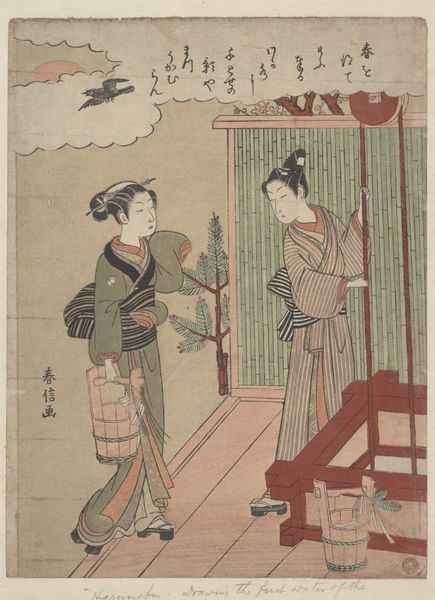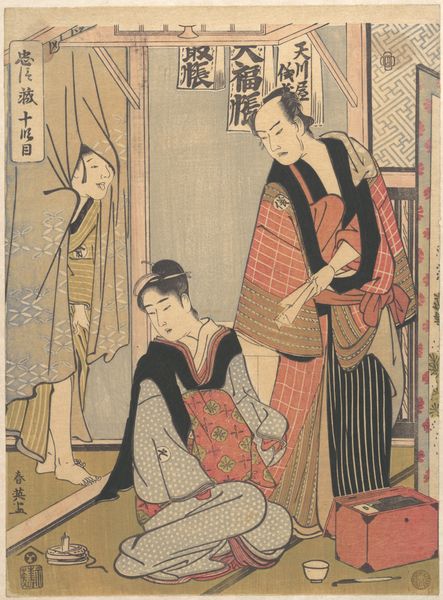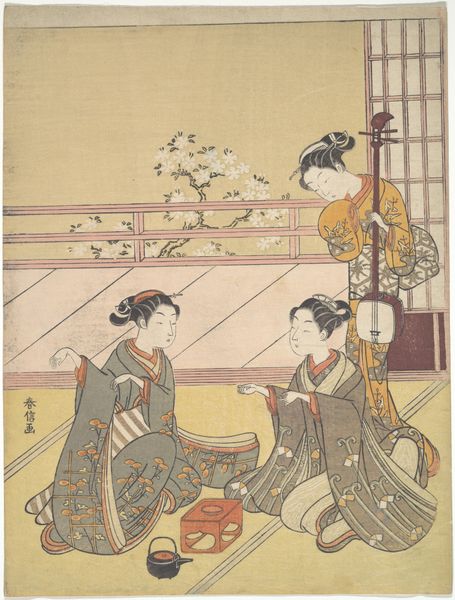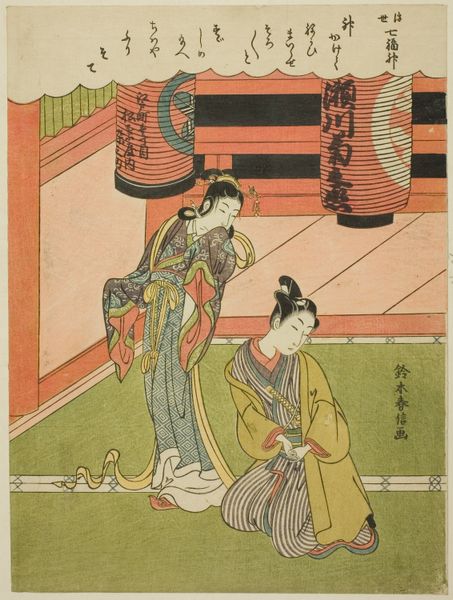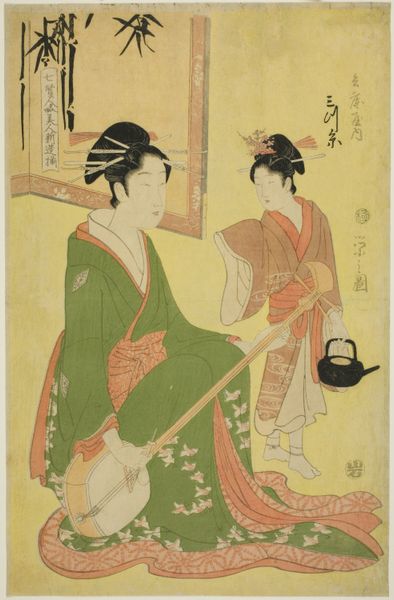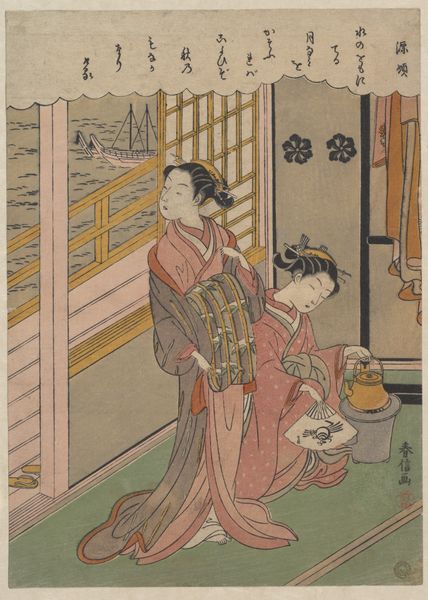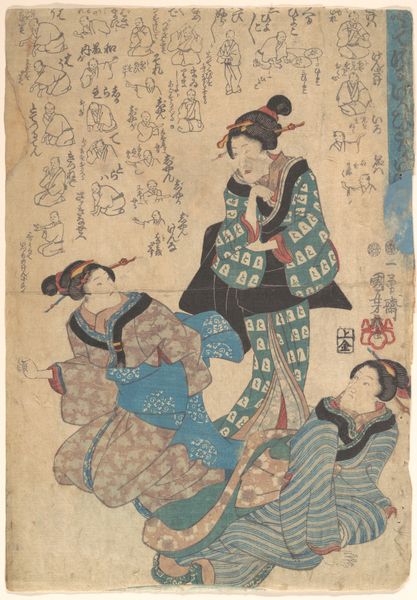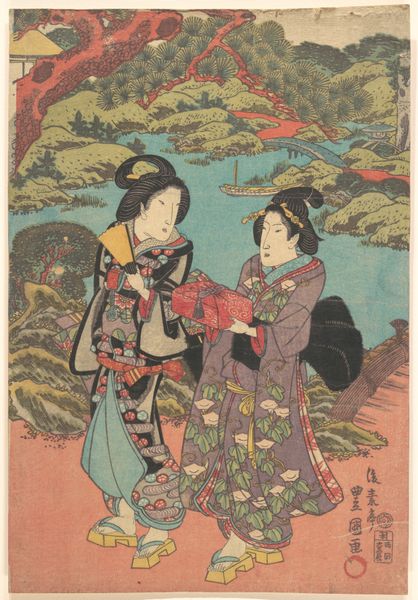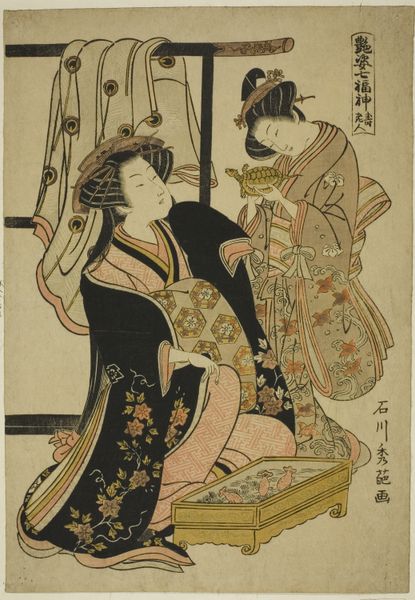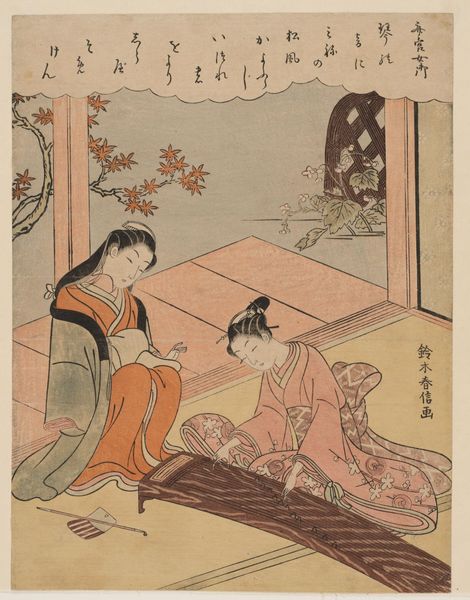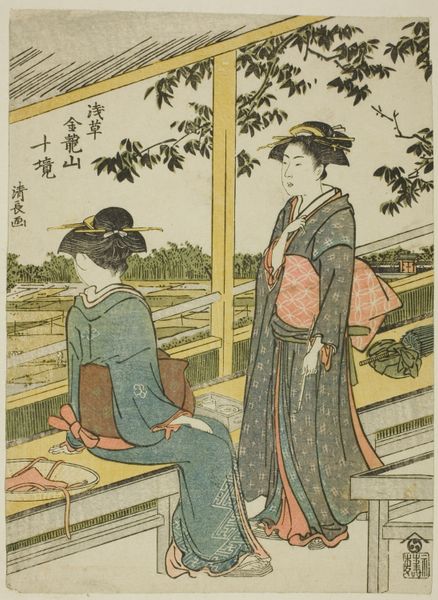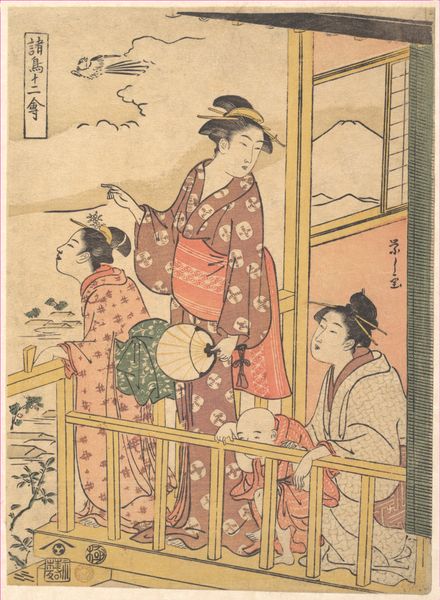
A Man and Two Women at a Teahouse at Wada no Ura Overlooking the Sea 1725 - 1770
0:00
0:00
print, woodblock-print
# print
#
asian-art
#
landscape
#
ukiyo-e
#
woodblock-print
#
genre-painting
Dimensions: H. 10 13/16 in. (27.5 cm); W. 8 1/8 in. (20.6 cm)
Copyright: Public Domain
Curator: Editor: Here we have Suzuki Harunobu’s woodblock print, “A Man and Two Women at a Teahouse at Wada no Ura Overlooking the Sea,” likely created between 1725 and 1770. It's currently housed in the Metropolitan Museum of Art. The figures have such lovely detail. What do you make of it? Curator: For me, this print raises interesting questions about production and labor. Ukiyo-e prints, though often depicting leisurely scenes, were a collaborative effort. We have the artist, yes, but also the block cutter and the printer, each contributing specialized skills. Does considering that process change how we view the image itself? Editor: It does! Thinking about the labor involved in creating these delicate lines and subtle color variations makes me appreciate the craft of each stage much more. So, beyond the individual artisans, how did prints like these circulate and get consumed by a wider public? Curator: That's key. These prints were relatively affordable, making them accessible to a broader audience than traditional paintings. They functioned almost as a form of popular media. Think about how these scenes of everyday life, even idealized, became objects of desire and shaped perceptions of beauty and fashion. Look closely at the patterns on their kimonos, they signal class and perhaps seasonal relevance. Editor: So, by studying the materials, the printing process, and how these prints were circulated, we can learn about social structures and cultural values of the time? Curator: Precisely. It moves us beyond simply appreciating the aesthetic and forces us to think about the economic and social forces at play. Editor: That gives me a new way to engage with the visual art, looking into the means of its creation to truly see it! Curator: It’s about seeing the art and what conditions allow for the art to exist in that society.
Comments
No comments
Be the first to comment and join the conversation on the ultimate creative platform.
